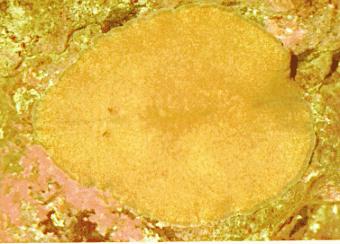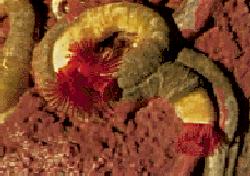 |
This page is actually three in one. I have combined the flat worms
(Platyhelminthes) ribbon and round worms (Nemertea) and Annelita worms. The flat worms are
interesting animals. They have an incomplete digestive system, and their three layers of
cells are bilaterally symetrical. The flat worms are also all cornavors with usually
visible pigmented eye spots. The ribbon and round worms on the other hand are colorfull,
slender and highly elastic in length. They unlike flat worms have a complete digestive and
circulatory system as do all the phylums from this point on. Nemerta is also differen from
Platyhelminthes by the fact that it uses its proboscis to catch prey. The phylum Annelida
is very simmilar to Nemerta. They both have bilateral symetry and complete circulatrory
systems. Annelida however has segmentation of body (usually with groups of brissels) and a
complete excretory system. Clam worms, Scale worms, and the Calcareous tube worm make up
this phylum. An example of an Annelida worm is in the picture below. |

